Catalinbread CAT RAH is a guitar pedal that emulates the sound of Jimmy Page's custom Hiwatt heads used in the legendary Royal Albert Hall gig in 1970. It features a 5-knob layout with a three-knob tone circuit and Volume and Gain controls. The tone circuit reproduces the circuitry from Page's Hiwatt exactly down to the component value, providing the correct gain levels and dynamic response as the amp. The pedal is designed to give you an incredible dynamic range that responds to your picking technique and your guitar's controls.
Catalinbread CAT RAH is a guitar pedal that emulates the sound of Jimmy Page's custom Hiwatt heads used in the legendary Royal Albert Hall gig in 1970. It features a 5-knob layout with a three-knob tone circuit and Volume and Gain controls. The tone circuit reproduces the circuitry from Page's Hiwatt exactly down to the component value, providing the correct gain levels and dynamic response as the amp. The pedal is designed to give you an incredible dynamic range that responds to your picking technique and your guitar's controls.






-
 1
1
-
 2
2
-
 3
3
-
 4
4
-
 5
5
-
 6
6
Catalinbread CAT RAH User manual
- Type
- User manual
- This manual is also suitable for
Catalinbread CAT RAH is a guitar pedal that emulates the sound of Jimmy Page's custom Hiwatt heads used in the legendary Royal Albert Hall gig in 1970. It features a 5-knob layout with a three-knob tone circuit and Volume and Gain controls. The tone circuit reproduces the circuitry from Page's Hiwatt exactly down to the component value, providing the correct gain levels and dynamic response as the amp. The pedal is designed to give you an incredible dynamic range that responds to your picking technique and your guitar's controls.
Ask a question and I''ll find the answer in the document
Finding information in a document is now easier with AI
Related papers
Other documents
-
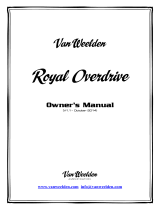 Van Weelden Royal Overdrive Owner's manual
Van Weelden Royal Overdrive Owner's manual
-
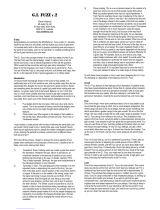 MI-Audio G.I. FUZZ Owner's manual
MI-Audio G.I. FUZZ Owner's manual
-
B W Zeppelin Air Owner's manual
-
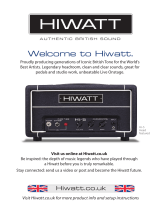 HIWATT HI-5 Owner's manual
HIWATT HI-5 Owner's manual
-
Dunlop EG74 User manual
-
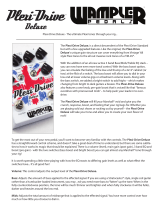 Wampler Plexi-Drive Deluxe User guide
Wampler Plexi-Drive Deluxe User guide
-
Fender Riff User manual
-
Bowers & Wilkins Zeppelin Air Owner's manual
-
Webb Steel Guitar Owner's manual
-
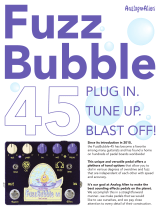 Analog Alien FuzzBubble-45 User manual
Analog Alien FuzzBubble-45 User manual















